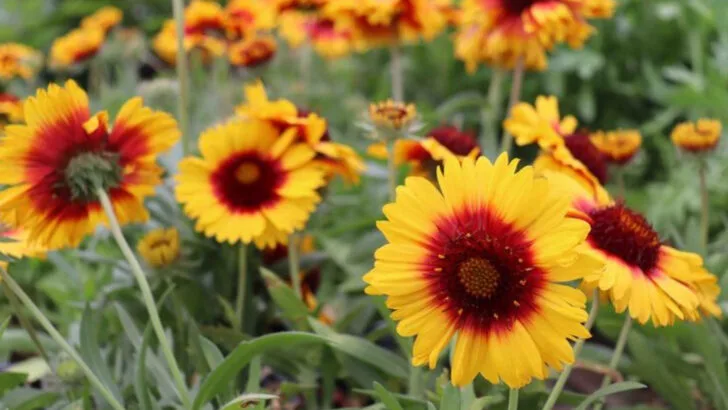Gardening in dry conditions doesn’t have to mean settling for dull, lifeless landscapes. In fact, some of the most vibrant, colorful, and fragrant plants in the world thrive on very little water—and look amazing while doing it. These 17 drought-proof plants are proof that low-maintenance doesn’t have to mean low-impact. They bloom boldly, hold up in scorching heat, and ask for almost nothing in return.
Whether you live in a desert climate, deal with watering restrictions, or just forget to turn on the hose, these resilient bloomers are your best garden allies. From flowering shrubs to heat-loving perennials and groundcovers that practically take care of themselves, each one has evolved to survive—and thrive—on minimal moisture. Bonus: most are also pollinator magnets, bringing bees, butterflies, and hummingbirds to your yard with no extra effort.
So if you’re ready to create a gorgeous, water-wise garden that keeps blooming even when the rain won’t come, these 17 fuss-free plants deserve a spot in your soil. They’ll save you time, water, and stress—all while making your space pop with color.
Lavender
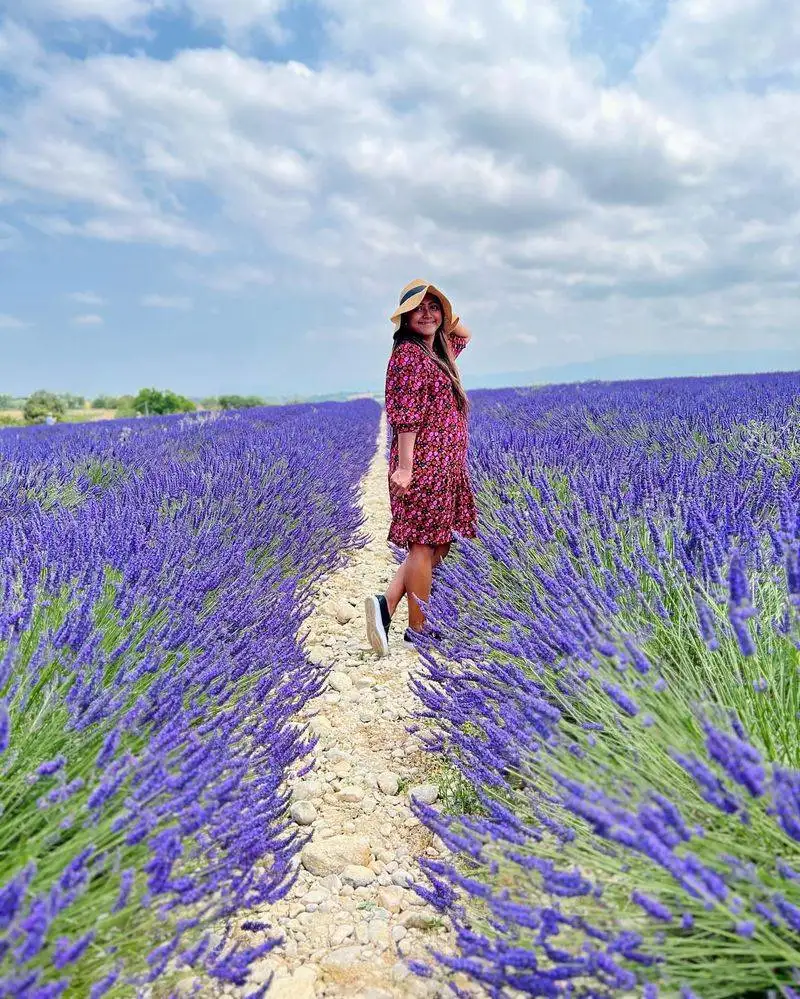
Famous for its calming fragrance, lavender thrives in sunny, dry conditions. This Mediterranean herb isn’t just about beauty; it’s resilient against heat and drought. Plant it where it gets at least six hours of sun daily, and watch it flourish with little water. The silvery foliage adds a touch of elegance, creating a striking contrast in your garden. Furthermore, lavender attracts pollinators, making it a garden favorite. Did you know lavender has been cherished since ancient times for its soothing properties? Place it near garden paths to enjoy its scent with every step you take.
Sedum
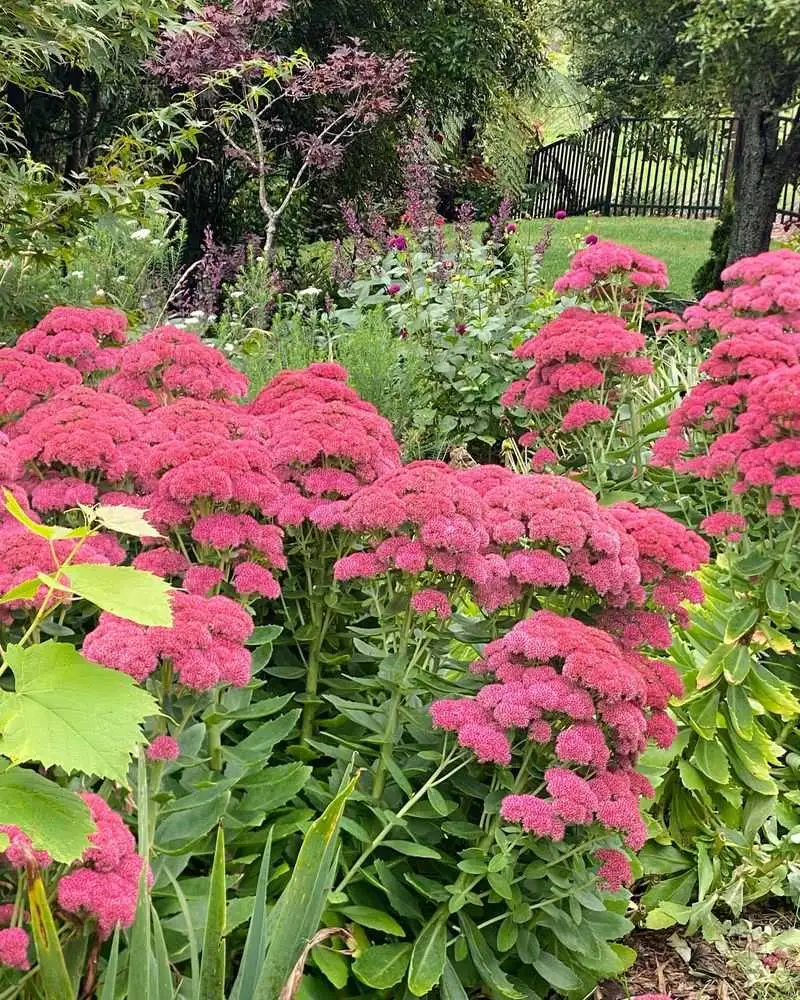
Ever considered a plant that seems to smile back at the sun? Sedum, with its fleshy leaves, is exactly that. These succulents are perfect for rock gardens, providing a tapestry of colors and textures. When water is scarce, sedum holds its own, storing moisture in its thick leaves. Varieties like Autumn Joy offer delightful pink blooms that transition to copper in the fall. Sedum’s resilience is matched by its beauty, making it a gardener’s delight. A fun trivia: sedum’s name derives from Latin, meaning ‘to sit’, reflecting its low-growing nature.
Russian Sage
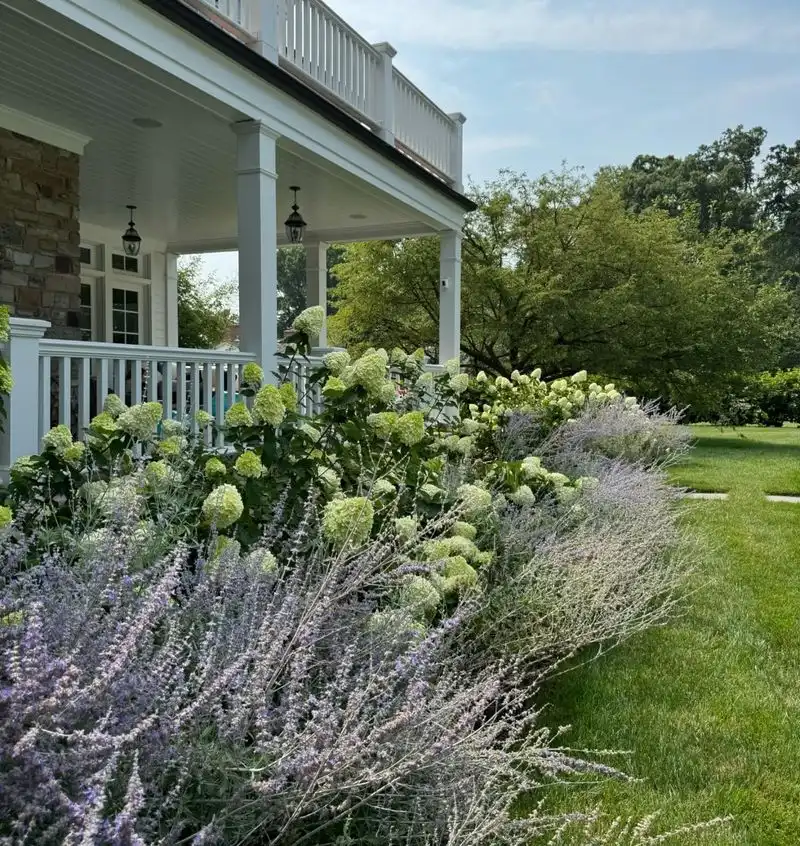
With its cloud-like lavender-blue flowers, Russian sage is a beacon of beauty in drought-prone gardens. This perennial isn’t just eye-catching; it’s incredibly hardy, thriving in poor soil and full sun. Russian sage is perfect for borders, where its airy blooms can sway gracefully in the breeze. Its aromatic foliage adds to its appeal, deterring pests while inviting beneficial insects. Historically, Russian sage was used for its medicinal properties in Central Asia. Add this to your garden for a touch of elegance and history.
Yarrow
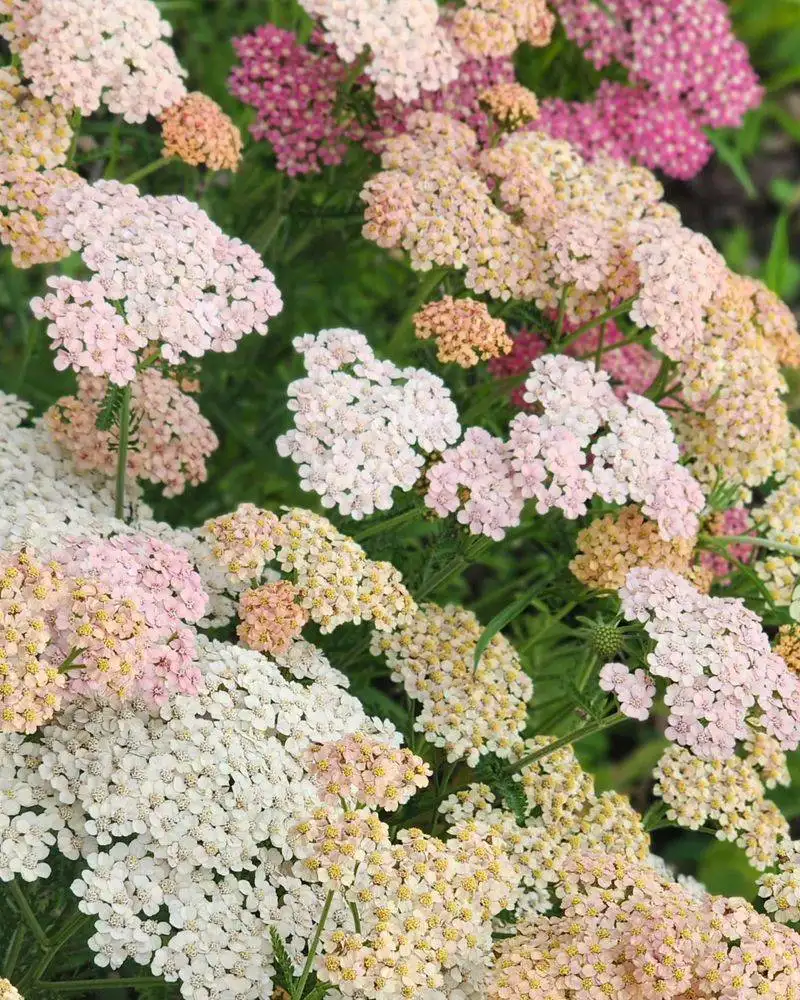
Yarrow’s feathery leaves and vibrant blooms make it a standout in any garden. This plant is a master of survival, flourishing in dry conditions with ease. Known for its flat-topped clusters of flowers, yarrow offers a range of colors from soft pastels to vivid yellows. Its hardiness is matched by its versatility; use it in borders or wildflower gardens. Beyond its beauty, yarrow has been used in herbal medicine for centuries. Its name comes from the Greek hero Achilles, who is said to have used it to treat wounds.
Coneflower
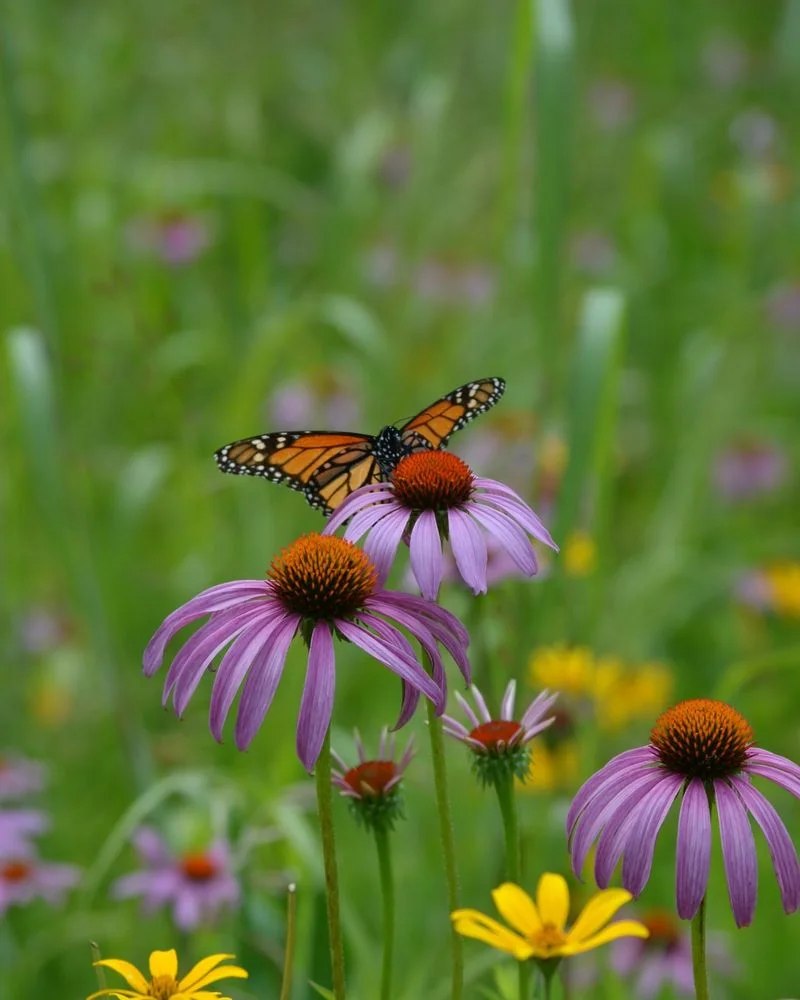
Coneflowers stand proud and tall, gracing gardens with their daisy-like blooms. These perennials are more than just pretty faces; they’re tough, enduring heat and drought like champions. Coneflowers come in an array of colors, from soft pinks to deep purples, offering endless possibilities for garden design. Their long blooming period ensures a constant display of color. Furthermore, they attract butterflies, adding movement and life to your garden. Historically, Native Americans used coneflowers for medicinal purposes, highlighting their multifaceted nature.
Blanket Flower
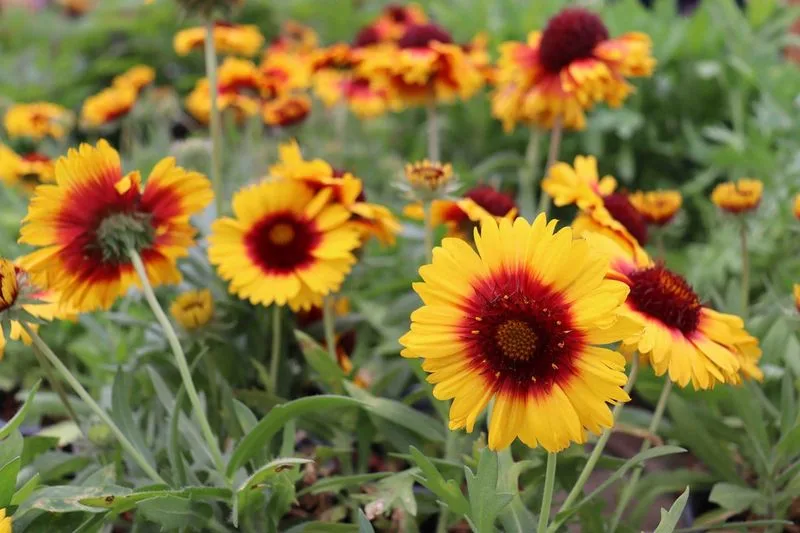
With its striking red and yellow petals, the blanket flower brings warmth to any garden. This sun-loving plant thrives in dry, sandy soils, making it ideal for less fertile spots. Its long flowering period ensures a vibrant display from early summer to fall. Blanket flowers are not just beautiful; they’re a favorite among pollinators, drawing bees and butterflies alike. If you’re in search of a reliable, low-maintenance plant, look no further. A fun fact: these flowers are named for their resemblance to brightly patterned Native American blankets.
Agave
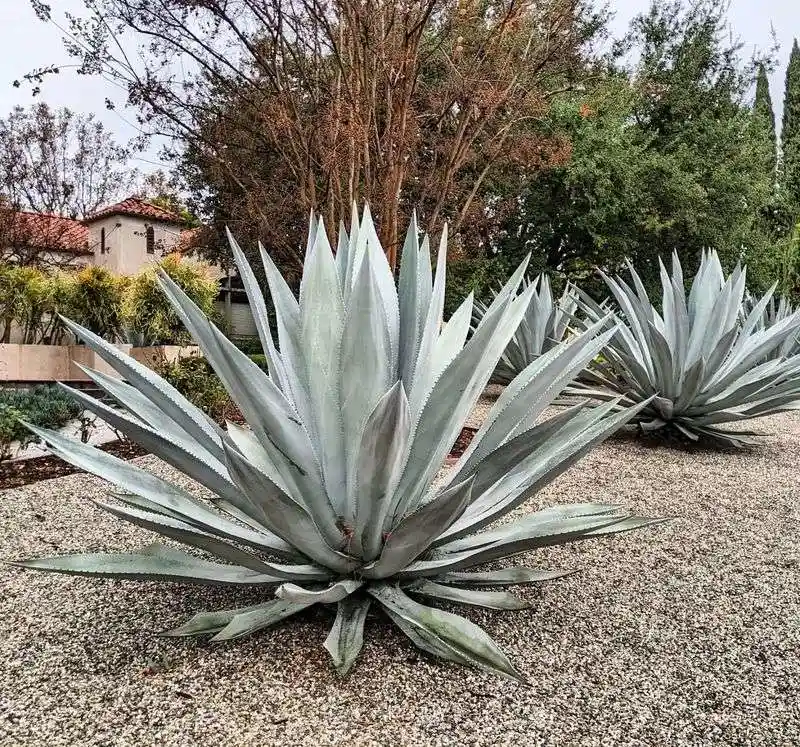
Agave plants serve as nature’s sculptors, with their bold, architectural forms. These desert natives are designed to survive with minimal water, storing moisture in their thick, spiky leaves. Ideal for xeriscaping, agaves add a striking focal point to any garden. While they’re slow growers, their enduring nature makes them worth the wait. Known for their role in tequila production, agaves have a storied history in Mexican culture. Whether in pots or open landscapes, agaves offer both style and substance to drought-tolerant gardens.
California Poppy

California poppies, with their brilliant orange petals, are the epitome of sunshine in plant form. These annuals thrive in poor soil and require minimal water, making them perfect for dry climates. Their delicate blooms close at night and on cloudy days, adding a dynamic element to your garden. Beyond their beauty, California poppies are celebrated as the state flower of California. They’re not just ornamental; they’ve been used in herbal remedies for their calming properties. A true testament to resilience and charm.
Lantana
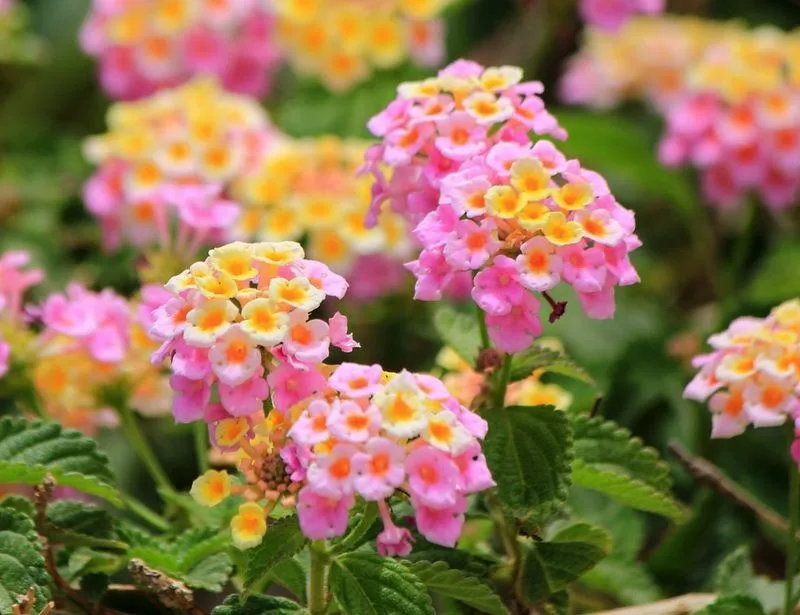
Lantana’s vibrant clusters of flowers are a feast for the eyes, transforming gardens into tropical paradises. This shrub thrives in hot, sunny conditions with little water. Lantana is a boon for pollinators, attracting butterflies and bees with its colorful blooms. Its long flowering season ensures continuous color in your garden. Be mindful, though; in some regions, lantana can become invasive. Nevertheless, with proper care, it offers vibrant hues and resilience. Did you know? Lantana’s berries change color as they mature, adding an extra layer of intrigue.
Bougainvillea
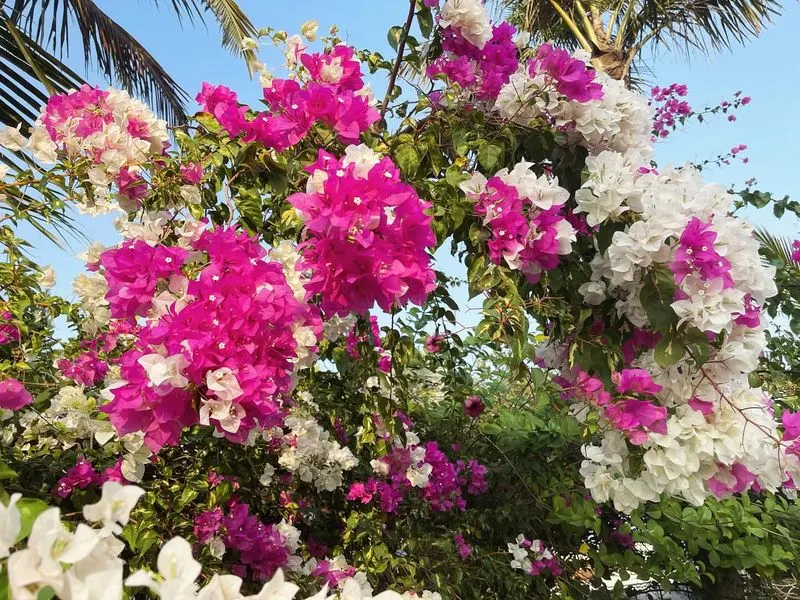
Bougainvillea dazzles with its intense, paper-like bracts that can stop passersby in their tracks. These climbers are ideal for sunny, dry gardens, requiring minimal water once established. Their vibrant colors range from magenta to orange, creating a stunning visual impact. Bougainvillea is perfect for trellises or walls, adding vertical interest to your space. While their thorns require careful handling, the visual rewards are immense. Originating from South America, bougainvillea adapts well to various climates, bringing a touch of exotic flair to gardens worldwide.
Rock Rose
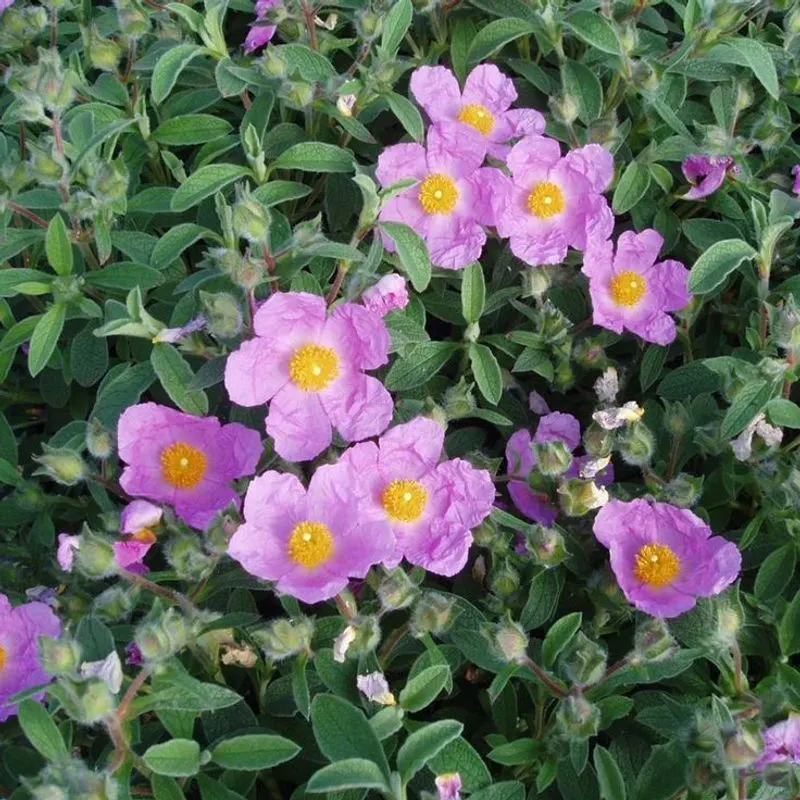
Rock rose captivates with its delicate, paper-like flowers that thrive on neglect. This evergreen shrub is perfect for rocky, dry areas, flourishing with minimal care. Rock rose is not just about looks; its resilience makes it an excellent choice for erosion control. Varieties like Cistus offer vibrant colors, from pure white to deep pink. Planting them near pathways allows you to appreciate their beauty up close. Interestingly, rock rose has been used in Mediterranean regions for its aromatic resin. A blend of beauty and utility.
Salvia
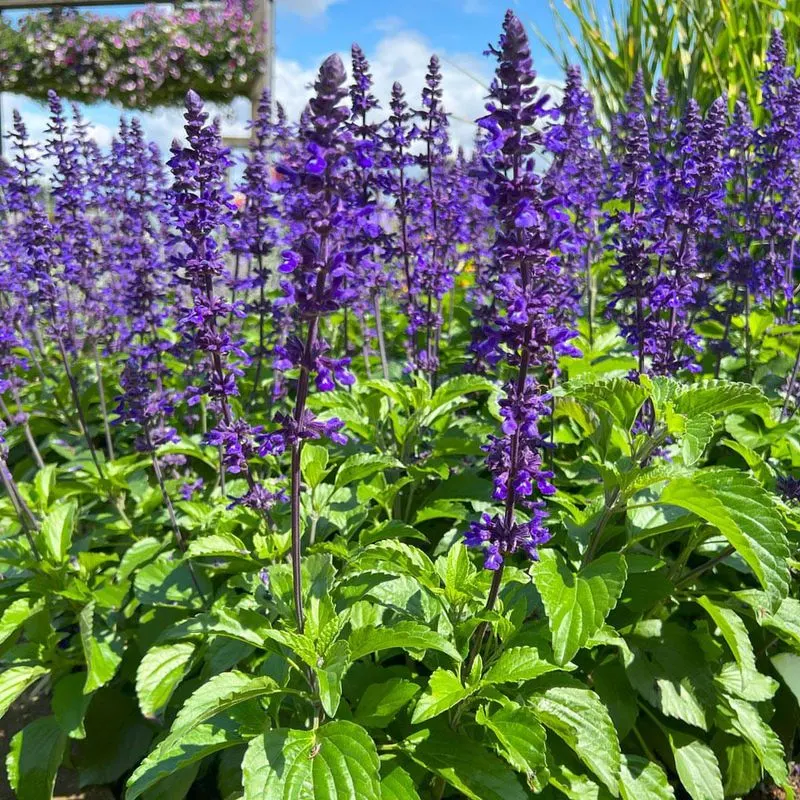
Salvia, with its spiky blooms, offers both beauty and adaptability. This versatile plant thrives in sun and well-drained soil, requiring minimal water once established. Salvia’s vibrant flowers attract hummingbirds, adding life to your garden. With numerous varieties, from deep blues to fiery reds, there’s a salvia for every palette. Besides its ornamental appeal, salvia has been used in culinary and medicinal applications. In ancient Rome, it was revered for its healing properties. A plant that truly marries form and function.
Verbena
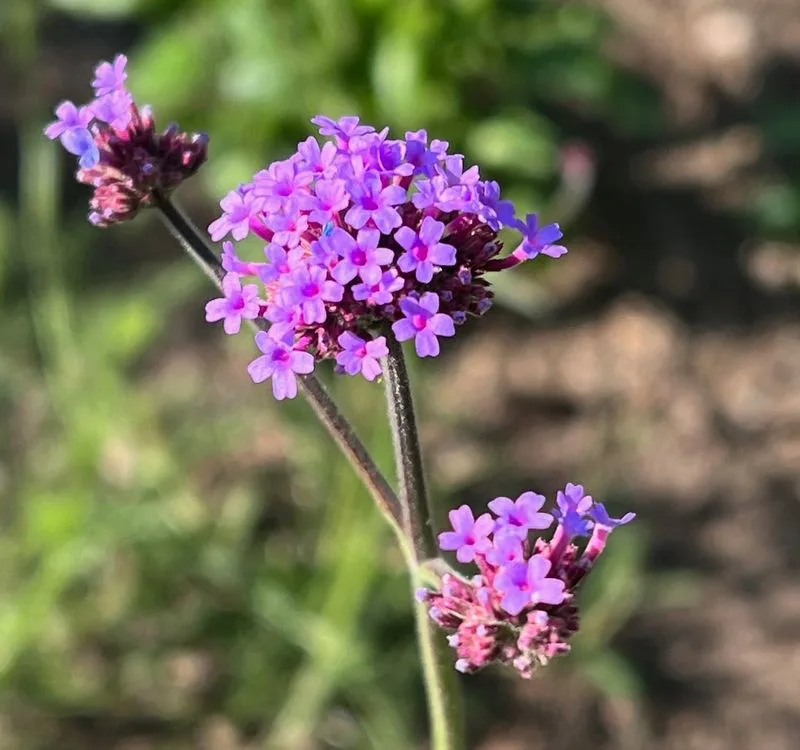
Verbena’s cascading blooms create an eye-catching display, perfect for hanging baskets and borders. This groundcover thrives in hot, dry conditions, blessing gardens with continuous blooms throughout the growing season. Verbena draws pollinators, making it not just a visual delight but a supporter of the ecosystem. Whether in purple, red, or white, verbena’s vibrant colors are sure to please. Historically, verbena was considered a sacred plant in various cultures. Its ease of care and beauty make it a must-have for drought-tolerant landscapes.
Gaura
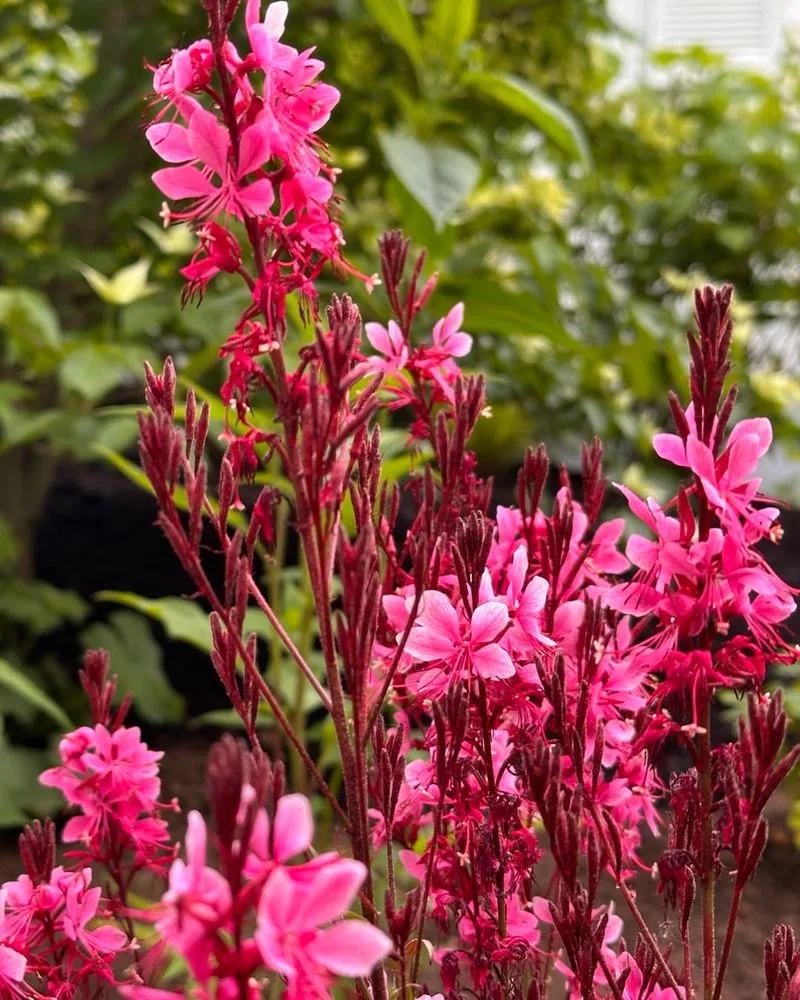
Gaura’s delicate, butterfly-like blooms sway gracefully in the garden, offering a touch of whimsy. This perennial thrives in full sun and well-drained soil, requiring minimal water to maintain its beauty. Gaura’s long flowering period ensures a constant display from spring to fall. Its airy form adds a lightness to garden borders, complemented by its gentle swaying in the breeze. Originally from Texas, gaura is well adapted to hot, dry climates. Its subtle charm and resilience make it a fitting choice for gardeners seeking elegance without effort.
Portulaca
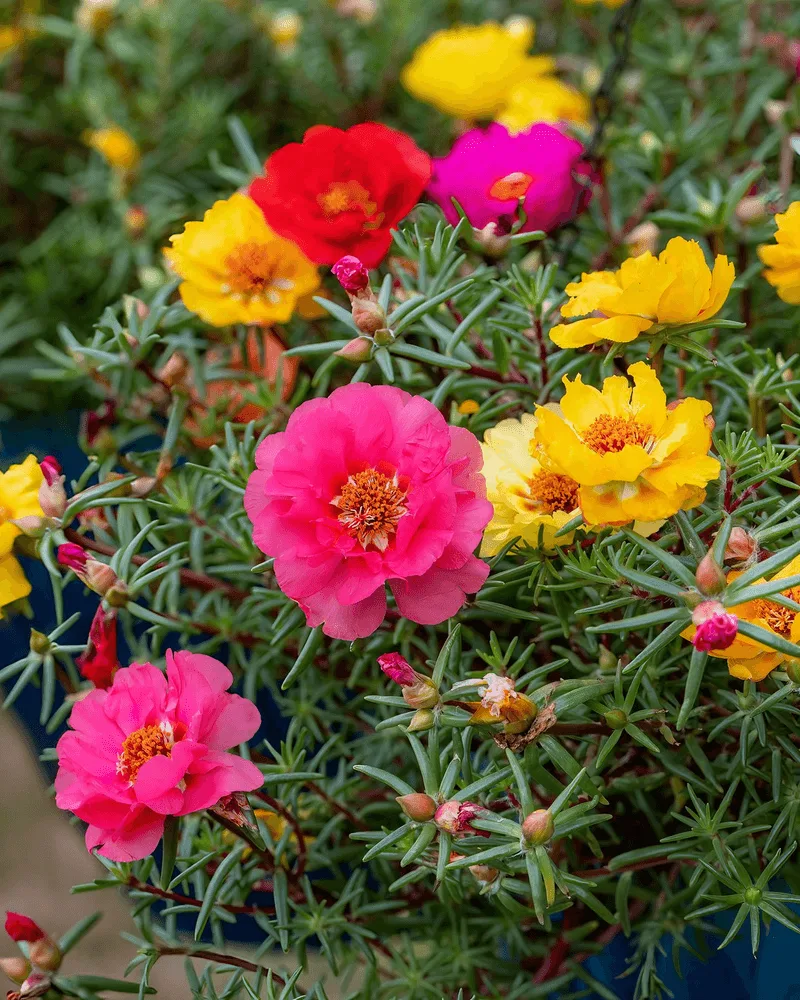
Portulaca, or moss rose, is a ground-hugging marvel with blooms that resemble miniature roses. Ideal for hot, dry areas, this succulent-like plant requires little watering once established. Its vibrant flowers open with the sun, offering a cheerful display in various colors. Beyond its aesthetic appeal, portulaca is edible, adding a peppery twist to salads. Its ability to thrive in poor soil makes it a versatile choice for challenging garden spots. An intriguing fact: portulaca’s blooms close at night, opening anew with the morning light.
Oleander
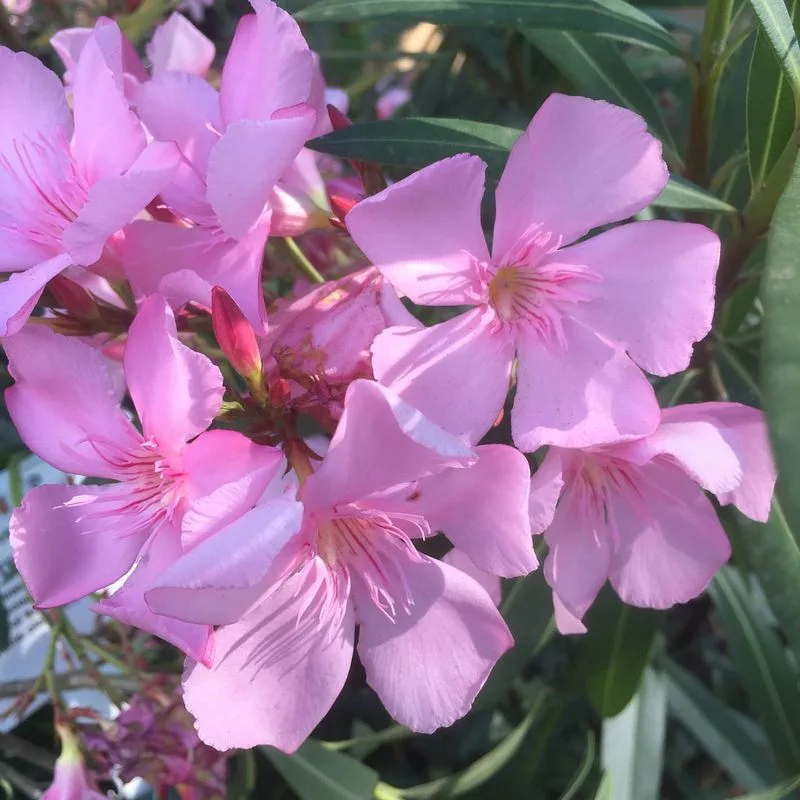
Oleander’s lush blooms and glossy leaves create a stunning spectacle in dry landscapes. This hardy shrub thrives in heat and sun, withstanding drought conditions effortlessly. Oleander’s flowers come in shades of pink, white, and red, adding a romantic flair to your garden. While its beauty is undeniable, caution is advised; oleander is poisonous if ingested. This plant’s resilience and long blooming season make it a popular choice for gardeners seeking beauty with minimal upkeep. Oleander’s rich history traces back to ancient civilizations, where it was often used in decorative gardens.
Echinacea
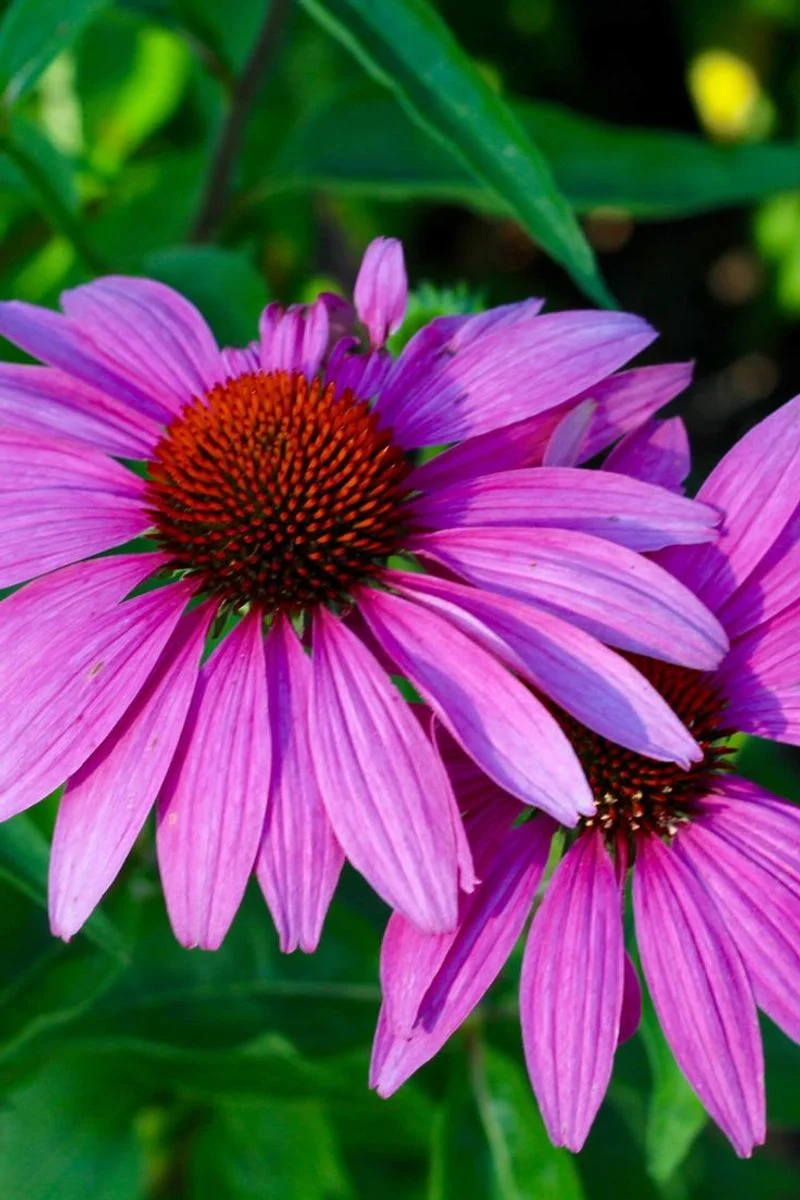
Echinacea, commonly known as coneflower, stands tall with its vibrant petals and sturdy nature. This perennial is a beacon of resilience, thriving in hot and dry conditions with minimal water. Echinacea’s long-lasting blooms attract butterflies and bees, supporting garden biodiversity. Its medicinal properties are well-known, often used to boost the immune system. With its striking appearance and health benefits, echinacea is both a gardener’s delight and a herbalist’s favorite. An interesting tidbit: echinacea tea was a staple for Native Americans long before it became popular in modern herbal remedies.

